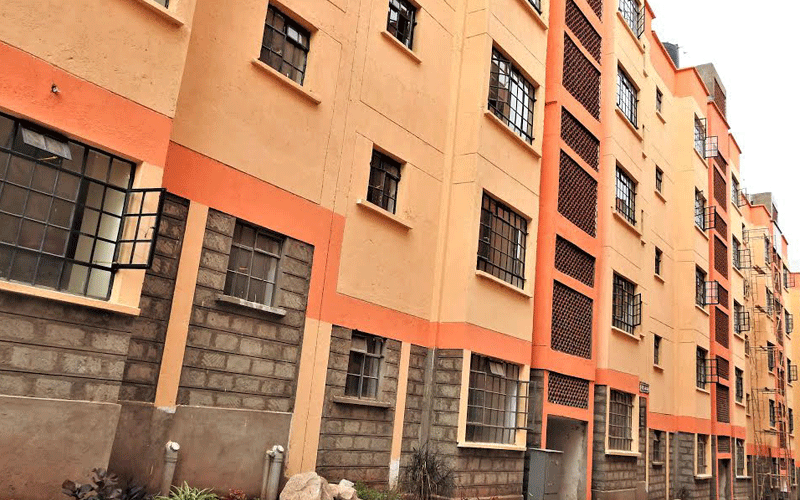Student housing investors bear the brunt of Covid-19

The closure of learning institutions due to coronavirus pandemic has created a tremendous financial and operational burden on owners that rent out houses to university and college students, even as colleges now retreat to remote learning.
Student Housing, or Purpose-Built Student Accommodation (PBSA), refers to housing that has been designed specifically to meet the demands and requirements of the modern-day student.
The concept has gained much traction globally and has become a mainstream investment class asset gaining more attention from institutional investors.
Tilda Mwai a researcher at Knight Frank says investment in housing for students in the entire East African region has continued to drive the real estate sector and the gap is far from being closed.
This is backed by another survey by Cytonn Real Estate firm, which indicates that the demand-supply gap between student accommodation and student enrolment continues to widen every year.
Edwin Dande the CEO at Cytonn Real Estate says other factors influencing the growth include high rental yields in comparison to other assets, and the sub-sectors stability even in times of economic downturns.
“All universities in Kenya are experiencing an acute student housing shortage.
The existing capacity is limited and new developments have ultimately not kept pace with the growth in enrolment,” Dande quotes the survey, which was conducted across Parklands, Ruiru, Kahawa Sukari, Thome, Juja, Rongai, Athi River where major universities are located.
Wide gap
According to the Ministry of Education, last year alone 919,400 students were enrolled in the country’s 67 universities and vocational colleges.
Yet student housing provided by universities stands at approximately 300,000 units countrywide, serving just 22.6 per cent of the student population, while 10 per cent commute from their homes.
The underserved gap in student housing is most severe in Nairobi, which hosts the majority of the country’s major universities, including Kenyatta University, University of Nairobi and JKUAT, as well as some of its private universities, such as United States International University and Strathmore University.

Overall, the city accounts for 43.1 per cent of the country’s total student enrolment.
Currently, less than 25 per cent of the current demand is met by university-operated supply.
As such, the student housing market in Kenya is driven by a large volume of private owners with relatively small portfolios of off-campus hostels, where the quality of accommodation is often way below what students want, or expect.
For developers moving to serve this missing segment, the yields are among the highest currently available in real estate, with student accommodation normally offering individual rooms around shared facilities, and thus generating multiple rental streams per shared unit.
Investor experiences
“I took a loan and built hostels that bring me Sh250,000 every month. The cost of land along the Nairobi-Thika highway was also affordable bacause the road had not been expanded,” says the owner of Ndarugo hostels, Fredrick Gichangi.
The Electrical Engineering university don is one of the student housing early investors who have been smiling all the way to the bank, well, until the Covid-19 pandemic broke out.
Closure of learning institutions saw students leave his property and his monthly income dropped to Sh6,000 per month, and only if he is lucky.
George Ngatia, the proprietor of Executive Hostels on the other hand has since adopted a new business model to survive. He has turned the hostel kitchen into an eatery.
Ngatia who took a bank loan to put up the accommodation for students says his monthly income went down from Sh100,000 a month to Sh12,000.
Costs of sanitisers and fumigation to prevent the spread of corona virus in his property has made profits hard to make besides the drop of students, according to Cheptowek Bor, another investor in the periphery of Moi University, Eldodret.
Student numbers may be suppressed by the fall-out from the current pandemic, as newly jobless or income-impaired parents may no longer be able to afford fees, as the government’s funds for Higher Education Loans Board loans may become cramped, and as the universities, too, make changes to cope with the dropped income from this academic year.
In the post-Covid-19 era, Mwai suggests developers and operators identify and prioritise the elements in student housing that are most important to students.
This should be beyond physical school attendance while factoring in affordability as developers aim to provide the highest quality accommodation possible and a cushion package from authorities.
On the brighter side, Mwai says the pandemic has put into sharp focus the expanded skillset now necessary for real estate success.
“To reach fruition, real estate projects now require advanced financial acumen and support as illustrated by Kenya’s innovative venture into the student housing market earlier on in the year,” he notes.
However, for the more than 2,000 completed units, the annual return is expected to take a hit as universities closed abruptly in March with reopening dates scheduled for January 2021.
Ongoing developments have also slowed down due to the supply chain disruptions and public transport restrictions.












